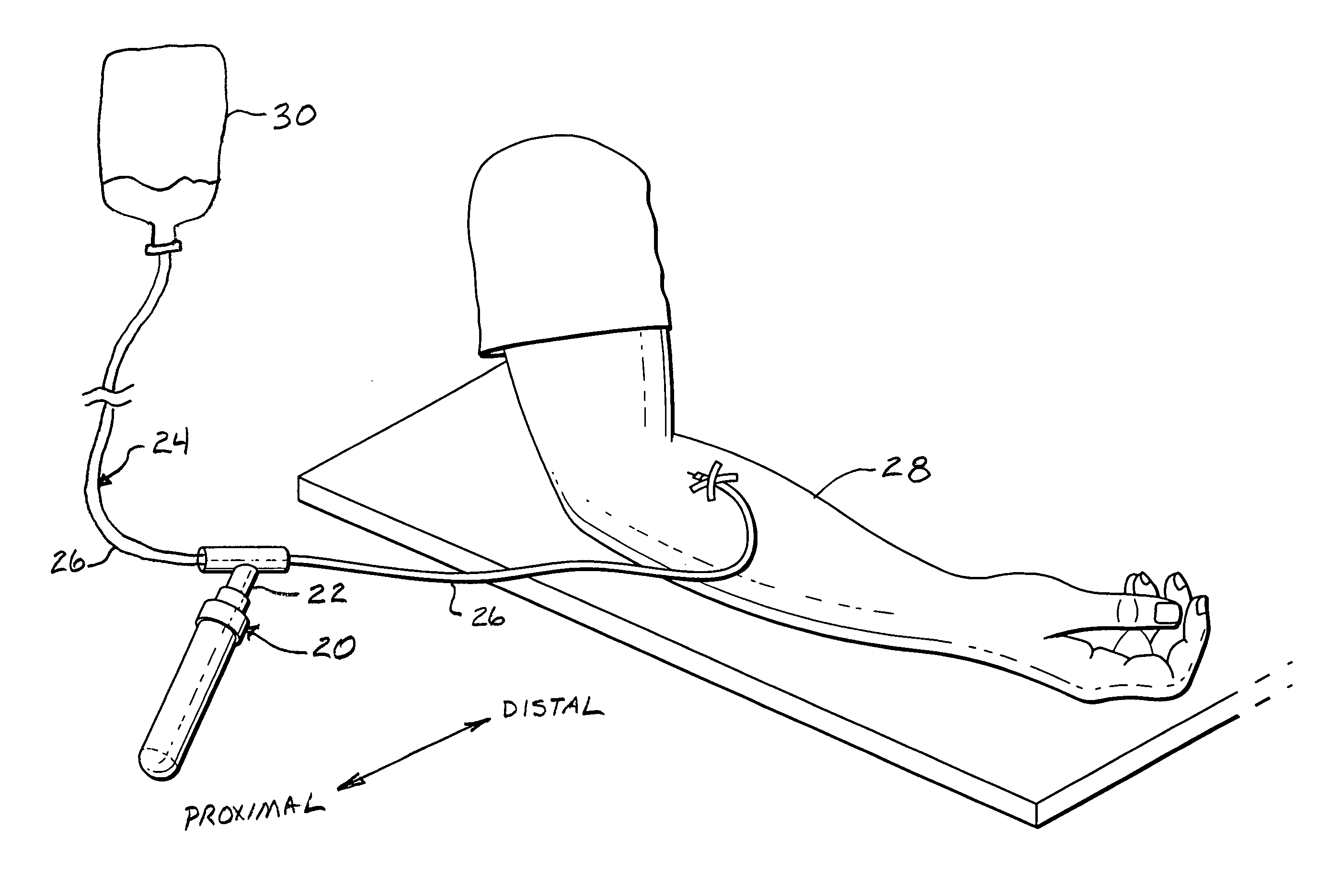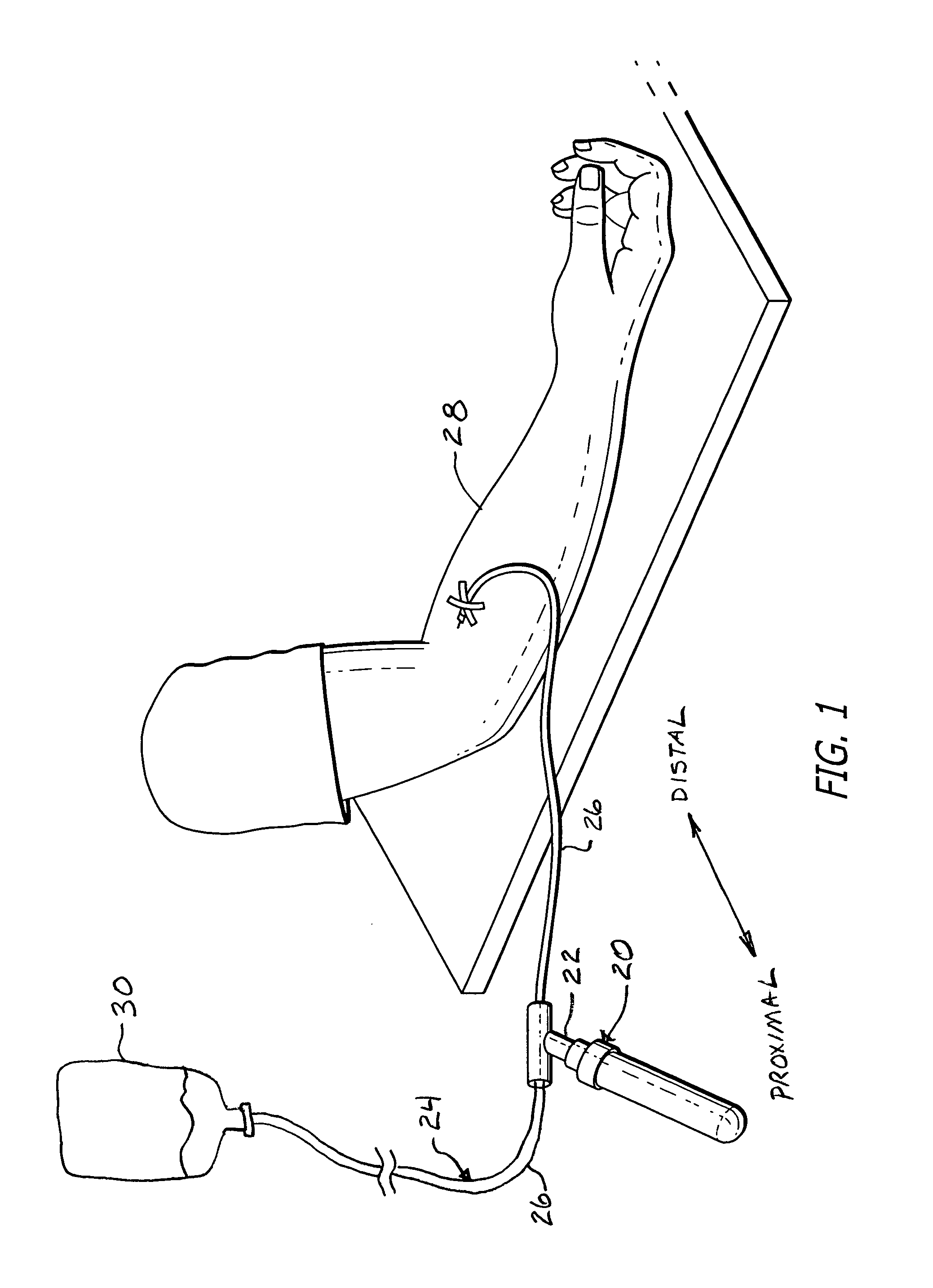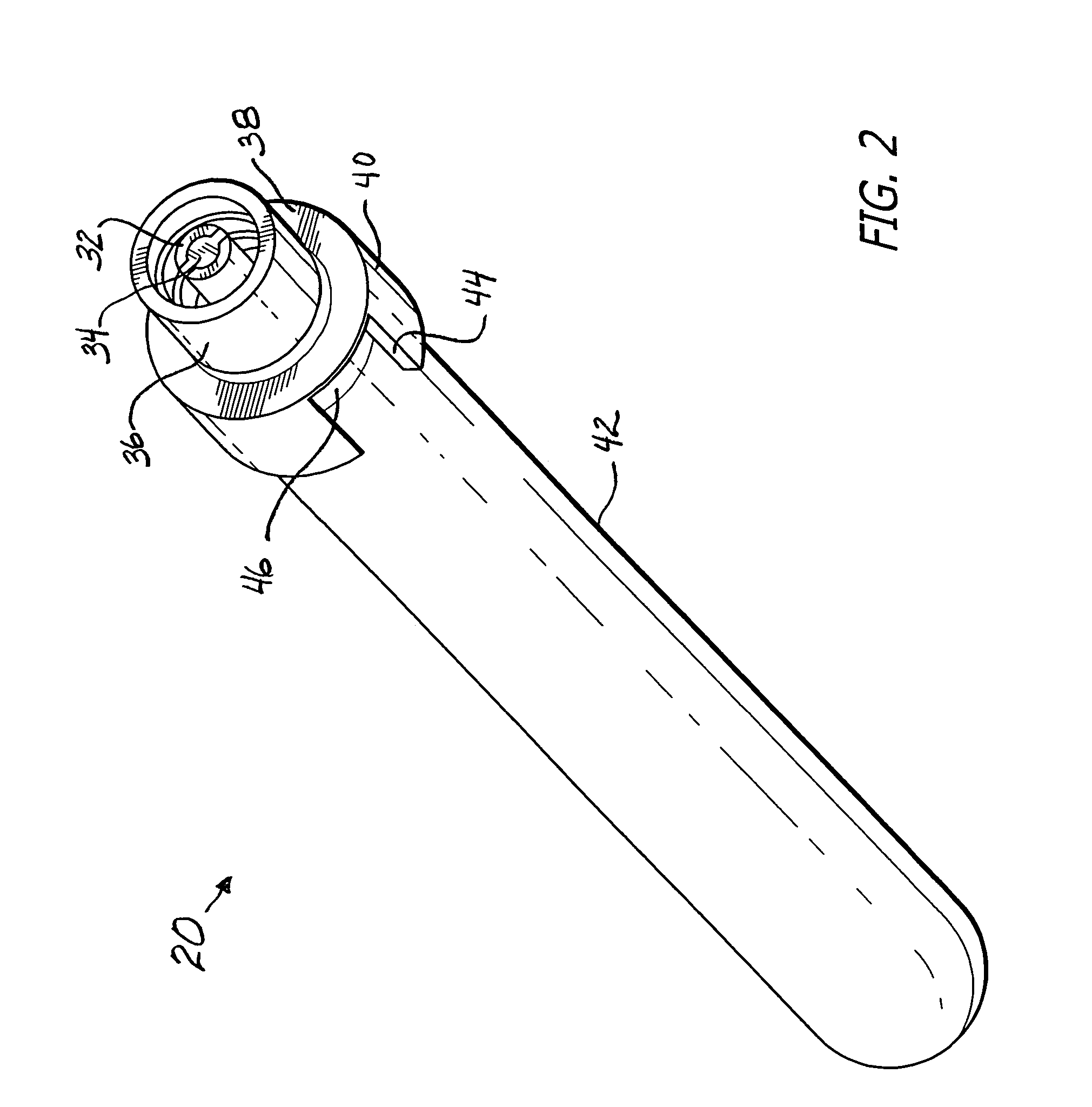Needle free blood collection device with male connector valve
a blood collection device and needle-free technology, applied in the field of self-sealing, needle-free blood collection devices, can solve the problems of distress for both the patient and the caregiver, the double-ended cannula and the cannula holder device are not well-suited for multiple or long-term use, and achieve the effect of increasing mechanical biasing forces
- Summary
- Abstract
- Description
- Claims
- Application Information
AI Technical Summary
Benefits of technology
Problems solved by technology
Method used
Image
Examples
Embodiment Construction
[0029]Referring now in more detail to the drawings for purposes of illustration, wherein like reference numerals designate corresponding or like elements among the several views, there is shown in FIG. 1 a needle free blood collection device 20 in accordance with aspects of the present invention operably connected to the proximal end of a female luer connector 22 that forms a part of a patient I.V. fluid administration set 24. The patient I.V. set 24 is presently used for the collection of blood through the I.V. line 26 that forms a part of the administration set 24. As is well known to those skilled in the art, I.V. fluid administration sets are used to interconnect a source of fluid such as the medical fluid bag 30 with the patient 28 for whom the fluid has been prescribed. In another case, the I.V. bag may be used to collect the patient's blood. A clamp or clamps not shown may be used on the tube 26 of the I.V. line as needed to isolate the bag from points downstream in the I.V. ...
PUM
 Login to View More
Login to View More Abstract
Description
Claims
Application Information
 Login to View More
Login to View More - R&D
- Intellectual Property
- Life Sciences
- Materials
- Tech Scout
- Unparalleled Data Quality
- Higher Quality Content
- 60% Fewer Hallucinations
Browse by: Latest US Patents, China's latest patents, Technical Efficacy Thesaurus, Application Domain, Technology Topic, Popular Technical Reports.
© 2025 PatSnap. All rights reserved.Legal|Privacy policy|Modern Slavery Act Transparency Statement|Sitemap|About US| Contact US: help@patsnap.com



